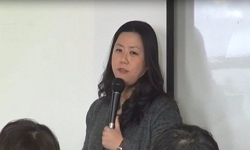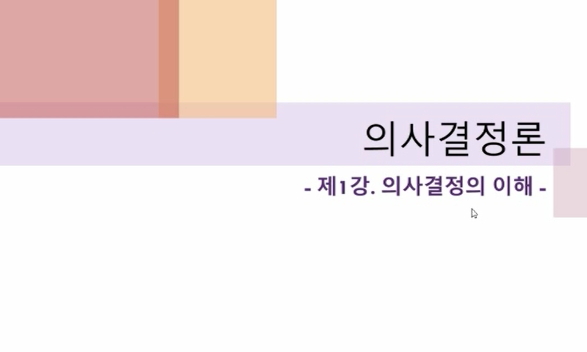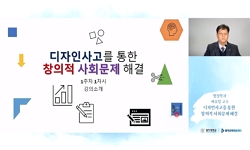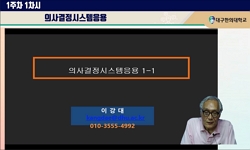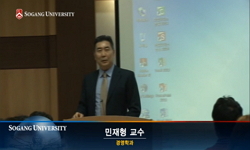주민공감 현장문제 해결사업은 리빙랩을 기반으로 한 사회문제 해결형 국책사업으로 대표적인 공공 리빙랩 사업이라 볼 수 있다. 리빙랩은 최종 사용자와 이해당사자가 참여하는 개방형 연...
http://chineseinput.net/에서 pinyin(병음)방식으로 중국어를 변환할 수 있습니다.
변환된 중국어를 복사하여 사용하시면 됩니다.
- 中文 을 입력하시려면 zhongwen을 입력하시고 space를누르시면됩니다.
- 北京 을 입력하시려면 beijing을 입력하시고 space를 누르시면 됩니다.

주민공감 현장문제 해결사업 디자인 의사 결정 과정 연구 = A Study on Decision Making Process of Design on Problem Solving with Empathy of Residents
한글로보기https://www.riss.kr/link?id=A107799209
- 저자
- 발행기관
- 학술지명
- 권호사항
-
발행연도
2021
-
작성언어
-
-
주제어
리빙랩 ; 디자인 사고 ; 이해관계자 ; 의사 결정 ; 디자인 모형 ; Living Lab ; design thinking ; stakeholder ; decision making ; design mock-up
-
등재정보
KCI등재
-
자료형태
학술저널
- 발행기관 URL
-
수록면
107-117(11쪽)
-
KCI 피인용횟수
0
- DOI식별코드
- 제공처
-
0
상세조회 -
0
다운로드
부가정보
국문 초록 (Abstract)
주민공감 현장문제 해결사업은 리빙랩을 기반으로 한 사회문제 해결형 국책사업으로 대표적인 공공 리빙랩 사업이라 볼 수 있다. 리빙랩은 최종 사용자와 이해당사자가 참여하는 개방형 연구개발 추진체제로 사회문제해결형 R&D 에 해당하며, 고령화, 안전, 에너지, 환경 등 여러 사회문제 해결 및 개선을 다루어 다양한 이해관계자 참여를 핵심으로 한다. 많은 국내 리빙랩 사례에서 디자인 사고 프로세스를 활용하고 있으나, 정작 디자인보다는 정해진 프로세스 수행에 치중하여 실제 이해관계자간 의사 결정 과정에서 디자인이 어떤 역할을 하는지 규명하여 그 기여도와 가능성을 확인할 필요성이 있다. 따라서, 본 연구는 실제 수행 중인 주민공감 현장문제 해결사업에 디자인 사고 방법론 적용에 있어 효과적인 의사결정을 위한 디자인 시각화 활용 방안 도출을 목적으로하며, 이를 위해 실제 주민공감 현장문제 해결사업 과제에 디자인 사고 방법론을 적용하고 그 의사 결정 과정을 분석하여 시사점을 도출하는 프로젝트 실증 방법론을 활용했다. 사업 전체 과정에 Stanford d.school 이 제시한 Design Thinking Process를 적용했고, 기획 리빙랩 단계에서 공감 및 문제 정의, 아이디어 발상 단계를 통해 이해관계자들의 의견을 수렴하여 과제 방향을 설정했으며, 문제해결 리빙랩에서 합의된 디자인 안에 따라 제품을 개발하고 테스트를 수행했다. 특히, 기획 리빙랩 단계에서 디자인 초안을 구체적인 이미지 형태로 공유했으며, 문제해결 리빙랩 단계에서 디자인 모형을 제시했는데, 그 과정에서 디자인의 시각화 결과물, 특히 입체물이 참여자들의 자발적인 참여와 타 분야 간 소통을 유도함을 확인할 수 있었으며, 결론적으로 디자인 의사결정과정에서 디자인 시각화 결과물 중 하나인 입체물의 역할과 가능성을 확인할 수 있었다. 도출된 결과를 바탕으로 향후 실제 제품을 도출하는 과제뿐만 아니라 서비스, 시스템이나 순수 기술개발에서도 디자인의 시각화 툴을 활용하여 이해관계자의 적극적인 참여와 효과적인 의사결정을 기대해 볼 수 있을 것이다.
다국어 초록 (Multilingual Abstract)
Problem Solving with Empathy for Residents(PSER) is a national project of social problem resolution based on living lab, which is an open R&D propulsion system, that end users and stakeholders participate in the process together. It covers aging, safe...
Problem Solving with Empathy for Residents(PSER) is a national project of social problem resolution based on living lab, which is an open R&D propulsion system, that end users and stakeholders participate in the process together. It covers aging, safety, energy, environment, etc and participation of interested parties is core to its strategy. A lot of domestic living labs conjugate design thinking process in their projects but, most of them are unequally distributed to execution of fixed process rather than design, so it is needed to investigate the role of design in decision making process among stakeholders, so that we can verify the level of contribution and possibility of design. Therefore, the purpose of this research is developing and utilizing design visualization tools in the decision making process of PSER. The methodology of this study is substantiation of the project, which was applying design thinking process in the living lab, analyzing its decision making process and drawing implications. The result was identifying the importance of three-dimensional objects in the decision making process. The Design Thinking Process by Stanford d.school was applied into an actual project, ‘Planning Living Lab’ aimed at setting a direction through gathering opinions of stakeholders and ‘Problem Solving Living Lab’ aimed at execution and test. A draft of design was presented at the planning of living lab through empathy/define stage of design thinking process, a design mock-up was presented at problem solving stage of living lab through ideate/prototyping stage from same process. It was found that the design model drew voluntary participation of stakeholders and communication between other fields. As a result, the role and possibility of design mock-up in decision making process was identified. It is expected that voluntary participation of stakeholders and efficient decision making would be possible through three dimensional design visualization, not only at developing product task, but also at service, system or technical development task based on this study.
참고문헌 (Reference)
1 권윤경, "지역체육대회 이미지 제고를 위한 엠블럼 개발 -도민체전을 중심으로-" 한국디자인문화학회 25 (25): 17-26, 2019
2 성지은, "사용자 주도형 혁신 모델로서 ICT 리빙랩 사례분석과 시사점" 한국과학기술학회 15 (15): 245-278, 2015
3 김은지, "도시재생 리빙랩 평가지표 개발에 관한 연구" 한국지역개발학회 31 (31): 17-44, 2019
4 강미정, "가추법과 디자인 씽킹 - 창의적 발상의 이론과 실제 -" 한국기호학회 38 : 7-35, 2014
5 Jeon, H, l, ,, "Problem Solving with Empathy of Residents with technology" 12 : 50-55, 2019
6 Seong, J, E, ,, "Operation & Examples of Living Lab" 127 : 1-46, 2013
7 Jee Hyun Lee, "Development of the frame of Participatory Design Process based on Network" Korea Society of Design Trend null (null): 17-28, 2013
1 권윤경, "지역체육대회 이미지 제고를 위한 엠블럼 개발 -도민체전을 중심으로-" 한국디자인문화학회 25 (25): 17-26, 2019
2 성지은, "사용자 주도형 혁신 모델로서 ICT 리빙랩 사례분석과 시사점" 한국과학기술학회 15 (15): 245-278, 2015
3 김은지, "도시재생 리빙랩 평가지표 개발에 관한 연구" 한국지역개발학회 31 (31): 17-44, 2019
4 강미정, "가추법과 디자인 씽킹 - 창의적 발상의 이론과 실제 -" 한국기호학회 38 : 7-35, 2014
5 Jeon, H, l, ,, "Problem Solving with Empathy of Residents with technology" 12 : 50-55, 2019
6 Seong, J, E, ,, "Operation & Examples of Living Lab" 127 : 1-46, 2013
7 Jee Hyun Lee, "Development of the frame of Participatory Design Process based on Network" Korea Society of Design Trend null (null): 17-28, 2013
동일학술지(권/호) 다른 논문
-
패션 커뮤니케이션에서 보여지는 디지로그의 조형특성과 의미
- 한국기초조형학회
- 강준호 ( Kang Jun Ho )
- 2021
- KCI등재
-
- 한국기초조형학회
- 고보경 ( Go Bo Kyung )
- 2021
- KCI등재
-
- 한국기초조형학회
- 고예지 ( Ko Ye Zy )
- 2021
- KCI등재
-
헤테로토피아의 장소성 개념으로 바라본 을지로지역 보존의 의의
- 한국기초조형학회
- 공현진 ( Kong Hyun Jin )
- 2021
- KCI등재
분석정보
인용정보 인용지수 설명보기
학술지 이력
| 연월일 | 이력구분 | 이력상세 | 등재구분 |
|---|---|---|---|
| 2027 | 평가예정 | 재인증평가 신청대상 (재인증) | |
| 2021-01-01 | 평가 | 등재학술지 유지 (재인증) |  |
| 2018-01-01 | 평가 | 등재학술지 유지 (등재유지) |  |
| 2015-02-09 | 학술지명변경 | 외국어명 : Bulletin of Korean Society of Basic Design & Art -> Journal of Basic Design & Art |  |
| 2015-01-01 | 평가 | 등재학술지 유지 (등재유지) |  |
| 2011-01-01 | 평가 | 등재학술지 유지 (등재유지) |  |
| 2009-01-01 | 평가 | 등재학술지 유지 (등재유지) |  |
| 2006-01-01 | 평가 | 등재학술지 선정 (등재후보2차) |  |
| 2005-01-01 | 평가 | 등재후보 1차 PASS (등재후보1차) |  |
| 2003-01-01 | 평가 | 등재후보학술지 선정 (신규평가) |  |
학술지 인용정보
| 기준연도 | WOS-KCI 통합IF(2년) | KCIF(2년) | KCIF(3년) |
|---|---|---|---|
| 2016 | 0.33 | 0.33 | 0.34 |
| KCIF(4년) | KCIF(5년) | 중심성지수(3년) | 즉시성지수 |
| 0.34 | 0.34 | 0.512 | 0.08 |





 KCI
KCI KISS
KISS